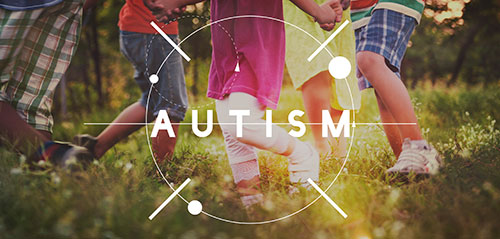World Autism day is on April 2nd. Let’s embrace those who face hurdles and celebrate those with unique talents, for autism is not a disability. It’s a different ability.
A concerned mom brought her 8-year-old daughter for a consult. She stated “my daughter pays no attention to people around her and disregards them. She never looks into one’s face. She constantly flicks her finger and rocks back and forth. She insists that her routines be exactly the same. If not, she gets aggressive and at times has self-injurious behaviour.

I think my child may have autism or autism spectrum disorder. Could you explain more about this please?
It is a complex developmental condition with persistent impairment in social interaction. Verbal and nonverbal communication, repetitive behaviour and restricted interests or activities. The severity of symptoms is variable among individuals from mild to severe with different levels of ability and disability. Atypical development may be observed from birth or become noticeable during 12- 32 months period when they stop acquiring or lose previously gained skills.
What do you mean by different levels of ability or disability?
They could have limited or advanced vocabulary, intellectual disability or above average IQ, strong memory skills, computer or musical or artistic skills.
What is the causal factor for Autism?
It is not possible to identify the exact cause. It is a complex combination of genetic factor and yet to be identified environmental influences.
What is the best treatment approach for my child?
Early intensive behavioural intervention is effective. Challenging behaviour such as aggression and hyperactivity can be managed with medication. Parental training should also be focused and that leads to better management of behaviour. Some of the established treatment approaches: –
- Social skills intervention
- Sensory based therapy – concentrated on improving body’s abnormal response to external stimuli.
- Applied behaviour analysis – used to increase positive behaviour and decrease behaviour that are harmful and help child acquire social skills and language.
- Speech and language therapy
- Occupational therapy
Emerging treatment approaches: –
- Floortime – Child led approach. Eg: If a child is interested in the colour of the wheel of toy car, an adult gets on the floor beside the child and plays and shows interest in the wheel. This is to enter her world this way and catch her interest and glance.
- Pivotal response training – a naturalistic approach with the child in a structured space to play. The adult follows the child’s lead. The child chooses the activity or conversation thus turning them into learning opportunities.
- Animal assisted therapy
What is your advice to caretakers like us with children with autism?
- Always remember that you are not alone
- Reach out to parent support group
- Do not abandon your social and family connection
- Parenting a child with special needs is not a sprint but a marathon
- Expect inconsistency and don’t let them get to you
- Celebrate each achievement and developmental gain and be ‘in the moment’
- Some children with autism have learning strengths. Determine the abilities and work on the challenges
- They can’t learn the way we teach. So teach the way they learn.

Article by Dr. Sujatha Velmurugan,
Consultant Psychiatrist,
Kauvery Hospital

